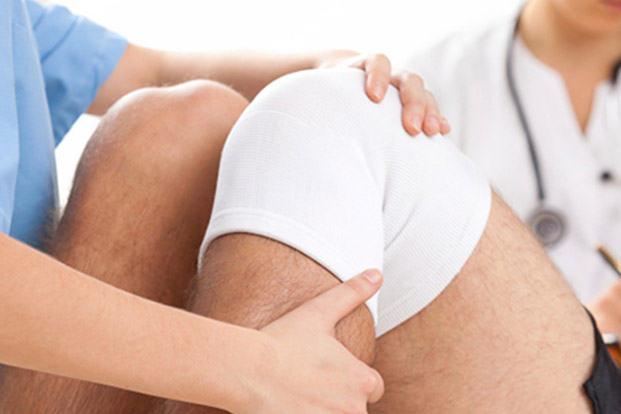Revision Joint Replacement: Challenges and Solutions – FAQ’s
Apr 19, 2022
Q. What do you mean by “Revision” Joint Replacement?
A. Primary joint replacements may wear out or fail over a period of time which may range from a few years up to two or three decades. Revision joint replacement is the term given to the process of removing primary prosthesis from a failed artificial joint, reconstruction of the pathological condition and implanting new prosthesis to restore normal joint mechanics
Q. Why do original implants wear out?
A. The main reasons for implant wear are mal-alignment (less than ideal alignment), poor soft tissue balancing, instability and natural wear at the bearing surface (the surface at which motion occurs) over the years.

Q. Apart from implant wear, are there any other issues necessitating revision joint replacement?
A. Yes, apart from implant wear, the major indications for revision joint replacements are infection, fracture around the implants, gross instability or dislocation. One or more of these factors may make the original construct non-viable even if the implants themselves are not worn out. In-fact, in most patients, more than one factor is responsible for ultimate failure of primary joint. The surgeon has to identify and address each of these issues in order to perform a successful revision joint replacement surgery.
Q. What is the burden of revision joint replacements in your practice?
A. Currently, nearly five percent of the total joint replacements being performed at our centre are revisions. The indications range from isolated implant wear to gross bone deficiencies requiring complex reconstructions.
Q. What are the challenges involved in revision joint replacement and how do you deal with them?
A. The first and foremost challenge is identifying the cause of failure of the primary joint replacement. This requires meticulous clinical examination and a series of investigations. Once the cause is identified, elaborate preoperative planning is required to avoid any surprises during the surgery. The surgical procedure is extensive and requires an expert surgical team, special equipments and implants, and the support of a good anaesthesia team. The reconstruction of bone loss and deficiencies requires an allograft bone bank which provides a biological answer to bone loss. A well established allograft bone bank is being run at Primus according to the guidelines of American Association of Bone Banking. The bones harvested from living donors at the time of primary joint replacement are screened thoroughly and preserved and used for revision joint replacements whenever required.
Q. What do you think are the ways to reduce the revision burden in future?
A. Firstly, primary joint replacements should be performed only by those surgeons who have acquired adequate training in this field and a major proportion of whose practice constitutes joint replacement only. Great care has to be exercised to ensure proper alignment, perfect soft tissue balancing and durable implant fixation in order to prevent premature failure. The implant and the bearing surface have to be carefully chosen according to the patient’s age, bone quality, severity of the preoperative condition, activity demands and social needs. The use of computer aided navigation has enabled us to avoid human errors and thus, provide the ideal alignment and soft tissue balancing at the time of primary joint replacement. We believe, this would go a long way in reducing the revision rate in the future.
Q. Is there any role of computer aided navigation in performing revision joint replacement surgery?
A. Currently, we are using the navigation protocols for primary joint replacements to perform revisions also (with some modifications in the technique). Intensive research is on and very soon, dedicated software for performing revision joint replacement with computer aided navigation will be in place.
Q. What is your advice to patients who have undergone primary joint replacement?
A. Results after joint replacement can be extremely gratifying provided appropriate caution is exercised by the surgeon during surgery as well by the patients after surgery. The postoperative precautions should be adhered to as far as possible. Activities like squatting, sitting cross-legged, high impact sports, if performed on a regular basis can reduce the life of artificial implants, and should therefore be avoided. In case any source of infection is identified in the body, or in the event of minor surgical or dental procedures, appropriate course of antibiotics should be taken promptly. Conscious care should be taken to avoid any accidental fall any time after operation. Clinical and radiological follow up should be done at least once in a year to detect any minor problems that may arise over a period of time.
In case of a significant biomechanical trouble, if your surgeon offers revision joint replacement, it should not be delayed for a long time as doing so may make the pathological condition significantly worse. In fact, it may not always be necessary to replace all the components of the implants and the surgical magnitude may still be smaller if revision is performed at an appropriate time. In case of a significant delay, revision would become much more technically challenging and the results may not be as gratifying. Nevertheless, revision joint replacement is also quite a successful procedure provided it is performed by an expert surgical team along with the entire armamentarium in place.









